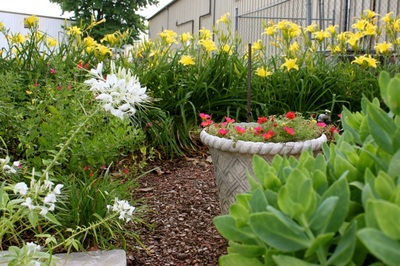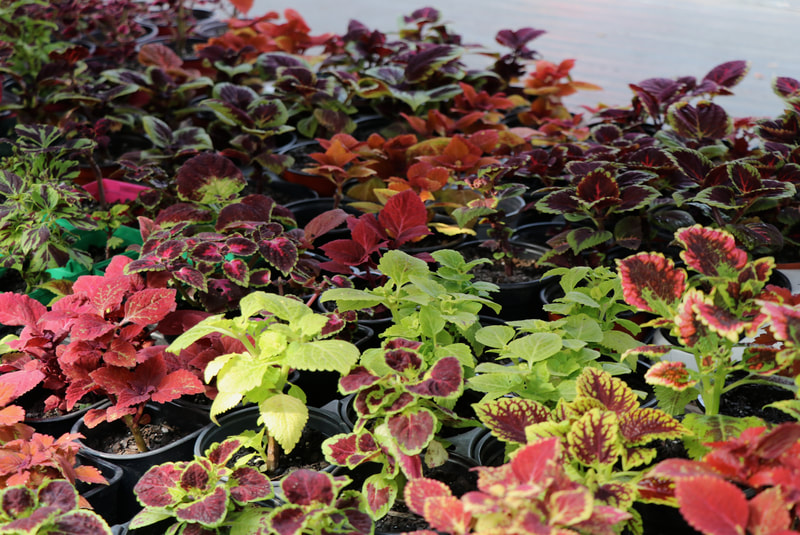Garden Tips
The Plant Doctor: How to Spray Fungicides to Protect Landscapes, Gardens, and Turf on Residential Property
MSU Extension Service Publication Number: P2705
View as PDF: P2705.pdf
Background
Fungicides work best as protectants. This means it is best to apply fungicides before a plant is exposed to a pathogen. After a plant has become diseased by an infecting pathogen, applying the correct type of fungicide may stop the spread of the disease or even put it into remission, but the plant will stay diseased. In the right environment, the disease will reappear. It is important to learn how to apply fungicides properly to prevent and limit disease.
Cautions
Although fungicides are generally low in toxicity, they present off-target risks—even biological fungicides. Before using a product, read the label and adhere to its guidance. For example, many fungicides pose a risk to aquatic species. Do not apply them near open water or where they may run into open water. Make sure that you follow and adhere to any instructions for pollinator protection.
Sprays using high pressures and fine nozzles increase the risk of drift, the aerial movement of the spray to areas not meant to be sprayed. Drift can pose risks to wildlife, pets, domestic animals, people not wearing protective equipment, and even structures. Before spraying, ensure that the area is free of people and animals. Spraying fence lines or other areas where you have poor control of neighbors or their animals can be especially risky and requires special care.
Spray when there is little or no wind. Most often, this occurs in the early morning or near sunset. Spraying at these times may also reduce the risk to pollinators.
Publication Intent
This publication is for occupants of residential properties who want to protect their living landscape from plant diseases. It is not for commercial applicators, although the same principles will apply. Commercial applicators employ very different equipment and face different management demands.
Types of Fungicides
There are two broad categories of fungicides: topicals and penetrants. Topical fungicides work like a raincoat; they remain on the outside of the plant and prevent the shower of airborne fungal spores from infecting the plant. Topical fungicides are also called contact fungicides or protectants. Penetrant fungicides move into the plant and kill or immobilize the fungus during or after infection. Penetrants may move very little or a fair amount once inside the plant.
The amount of movement depends on the particular fungicide, the application method, and the use of adjuvants, such as a spreader sticker. Regardless of the fungicide type, effective control depends on correct application, as well as application timing.
Ornamental fungicides registered for residential use are mostly penetrants, with some topicals. Fruit fungicides are mixtures of both topicals and penetrants. Most vegetable fungicides available to the homeowner are topicals.
Spray Basics for Fungicides
When applying a fungicide spray, three factors are essential: (1) the volume of spray solution applied in a given area (e.g., 20-foot length of row, an acre, or per thousand square feet), (2) type of spray nozzle, and (3) spray pressure. All three are varied in order to make the correct spray pattern for the crop and the fungicide being applied.
Since many diseases begin on the lower leaves of the plant, the spray solution must penetrate the plant canopy and reach these lower leaves. Furthermore, the solution must coat the underside of the plant leaves if good protection is to be obtained, especially if a topical fungicide is used. All three essential factors—spray volume, spray nozzle, and spray pressure—are changed to optimize the penetration of the plant canopy and coating of the plant parts.
Increasing the volume improves both the penetration of the plant canopy and the coverage of the plant. Spray volumes suitable for some herbicides (e.g., 1 gallon per 5,000 square feet) are not reasonable for fungicides. In general, you will need to apply a volume equal to about 2 gallons per 1,000 square feet for turf. The volume of spray solution may be more, depending on the type of crop (such as for Irish potatoes), but less is not a good idea. Spray nozzles break up the stream of solution coming from the sprayer into a distinct pattern of droplets. The more uniform the droplet placement and size, the better the plant coverage.
Please download the PDF copy of the publication for detailed information.
MSU Extension Service Publication Number: P2705
View as PDF: P2705.pdf
Background
Fungicides work best as protectants. This means it is best to apply fungicides before a plant is exposed to a pathogen. After a plant has become diseased by an infecting pathogen, applying the correct type of fungicide may stop the spread of the disease or even put it into remission, but the plant will stay diseased. In the right environment, the disease will reappear. It is important to learn how to apply fungicides properly to prevent and limit disease.
Cautions
Although fungicides are generally low in toxicity, they present off-target risks—even biological fungicides. Before using a product, read the label and adhere to its guidance. For example, many fungicides pose a risk to aquatic species. Do not apply them near open water or where they may run into open water. Make sure that you follow and adhere to any instructions for pollinator protection.
Sprays using high pressures and fine nozzles increase the risk of drift, the aerial movement of the spray to areas not meant to be sprayed. Drift can pose risks to wildlife, pets, domestic animals, people not wearing protective equipment, and even structures. Before spraying, ensure that the area is free of people and animals. Spraying fence lines or other areas where you have poor control of neighbors or their animals can be especially risky and requires special care.
Spray when there is little or no wind. Most often, this occurs in the early morning or near sunset. Spraying at these times may also reduce the risk to pollinators.
Publication Intent
This publication is for occupants of residential properties who want to protect their living landscape from plant diseases. It is not for commercial applicators, although the same principles will apply. Commercial applicators employ very different equipment and face different management demands.
Types of Fungicides
There are two broad categories of fungicides: topicals and penetrants. Topical fungicides work like a raincoat; they remain on the outside of the plant and prevent the shower of airborne fungal spores from infecting the plant. Topical fungicides are also called contact fungicides or protectants. Penetrant fungicides move into the plant and kill or immobilize the fungus during or after infection. Penetrants may move very little or a fair amount once inside the plant.
The amount of movement depends on the particular fungicide, the application method, and the use of adjuvants, such as a spreader sticker. Regardless of the fungicide type, effective control depends on correct application, as well as application timing.
Ornamental fungicides registered for residential use are mostly penetrants, with some topicals. Fruit fungicides are mixtures of both topicals and penetrants. Most vegetable fungicides available to the homeowner are topicals.
Spray Basics for Fungicides
When applying a fungicide spray, three factors are essential: (1) the volume of spray solution applied in a given area (e.g., 20-foot length of row, an acre, or per thousand square feet), (2) type of spray nozzle, and (3) spray pressure. All three are varied in order to make the correct spray pattern for the crop and the fungicide being applied.
Since many diseases begin on the lower leaves of the plant, the spray solution must penetrate the plant canopy and reach these lower leaves. Furthermore, the solution must coat the underside of the plant leaves if good protection is to be obtained, especially if a topical fungicide is used. All three essential factors—spray volume, spray nozzle, and spray pressure—are changed to optimize the penetration of the plant canopy and coating of the plant parts.
Increasing the volume improves both the penetration of the plant canopy and the coverage of the plant. Spray volumes suitable for some herbicides (e.g., 1 gallon per 5,000 square feet) are not reasonable for fungicides. In general, you will need to apply a volume equal to about 2 gallons per 1,000 square feet for turf. The volume of spray solution may be more, depending on the type of crop (such as for Irish potatoes), but less is not a good idea. Spray nozzles break up the stream of solution coming from the sprayer into a distinct pattern of droplets. The more uniform the droplet placement and size, the better the plant coverage.
Please download the PDF copy of the publication for detailed information.


